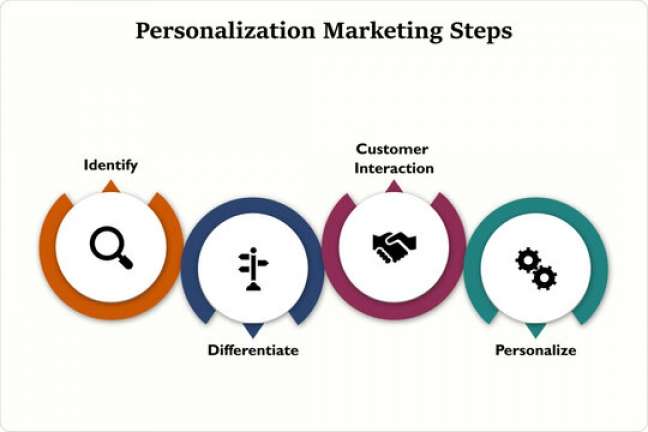Although law firm marketing and promotion are costly, how many businesses track their return on investment, or ROI?
How many law firms rely on their marketing decisions on “their feelings” rather than data?
How many lawyers want to know whether they are running a profitable law company or a sinking ship that happens to undertake legal work?
We wish the numbers were better, but as per one of the reports, over 60% of law firms do not analyze marketing ROI!
If you want to boost your firm’s marketing, you must deliver a compelling return on investment. Every dollar you spend should get you the most benefit possible, so don’t waste your money on ineffective strategies.
Simply launching a website may not be enough to bring in customers. For most law firms, attracting clients involves using a combination of law firm marketing strategies – and even then, you’ll need to monitor how each one performs over time.
Is your marketing, however, effective?
The answer is contingent on your definition of ‘working.’
Is it about getting more recognition, starting more conversations that produce opportunities, or charging more time / generating more revenue?
Answer these questions to assess whether your marketing efforts are resulting in profitable business or desired results. After all, that is exactly what marketing aims to achieve. If what you are doing is generating extra revenue for your business, you should be able to determine if it is worthwhile.
The return-on-investment (ROI) of any marketing activity is therefore of paramount importance.
Calculating Marketing Return On Investment
Your return on investment will depend on two factors:
Marketing costs and Results (let’s look at revenue as an example).
As a result, a simple formula is:
Return on Investment = (Attributable Revenue – Marketing Cost) / Marketing Cost
However, measuring marketing ROI can be challenging,
To what extent can a marketing campaign be credited with an increase in sales? Did they reach out to you because they saw your webinar, or are they, good friends, with your business partners?
It takes patience and dedication to determine the return on investment from any marketing effort. Marketing campaigns can take months to show results. As a result, you can’t know your ROI unless your systems can calculate, analyze, and model complex attribution models.
A revenue-to-marketing-cost ratio is a reliable tool for measuring revenue versus marketing expenditures.
You make money for every dollar of advertising you spend if your revenue to marketing cost ratio is high.
For example, if $2 spent on marketing generates $4 in revenue, the revenue-to-cost ratio is 2:1.
Should you expect to get a significant return on investment when you invest in such marketing?
In some industries, it might be appropriate to have a 5:1 marketing income to cost ratio. There is no empirical support for this ratio in law firms. In other words, anything less than 10:1 is deemed poor, while anything greater than 10:1 is deemed outstanding.
What Are The Most Influential Factors In Marketing ROI?
Rather than getting caught up in complicated marketing terms, focus on STP.
Segmentation (S): Based on your services which countries/regions, sectors, and organizations are most relevant?
Targeting (T): Which audience is most likely to resonate with your material? How can you engage them? What’s their position and seniority?
Positioning (P): How will the message be communicated, and via which channels?
You can maximize your marketing ROI by following these pointers.
You should keep in mind that legal marketing may seem like a lot – and it is – however, the best legal marketing company like Legal Soft Solution can help those law firms who need it.
How to Improve Your Marketing ROI? – 7 Tips
The following strategies may help you maximize your marketing ROI, depending on your specific situation.
#1. Develop a Comprehensive Digital Marketing Strategy
Investing money in the right marketing channels is the first step to increasing your company’s marketing ROI. You cannot merely design a one-page website and expect clients to flock to it.
An effective digital marketing plan involves a lot more than that. For example, law firms using the most effective marketing strategies include:
- A visually appealing website with compelling content and calls to action
- A profile of law practice in a well-known legal directory
- PPC (pay-per-click) advertising
- An instructive and engaging social media presence.
#2. Market Your Law Firm To The Correct Demographic
If you only intend to attract a few clients, you should not cast a wide net. To reach your ideal clients with your marketing, you must implement the right strategy. How likely are your customers to use social media, for example? If so, your company should be using the same platforms as your competitors. To contact very specific individuals, you can also run paid social media ads.
On the other hand, do your clients typically search for an attorney or legal information using search engines like Google or Bing? When you want to make your company appear at the top of the search results, you should focus on PPC advertising.
You should also tailor your advertisements and website content to your prospects. Avoid using too much legalese in your letter, as you are writing to general people seeking legal help & not lawyers.
#3. Produce High-Quality Content/Material
You need to ensure the quality of your content, whether you’re writing a brand new blog post or writing a social media post. Posting something solely for the sake of posting something is not enough. Ensure the content will interest, engage, or help potential clients.
If your content is something potential clients need – or cannot find anywhere else – they will gravitate towards your website and law firm marketing.
#4. Keep Track Of Leads, Evaluate Results, And Reallocate Spending…And Then Repeat
It’s good to see clients pouring in if your marketing strategy is working, but that doesn’t mean you’re done. As a result, your work is just getting started since you must keep track of your marketing strategies to determine which ones are successful and not. If you want to increase sales, you should reallocate your marketing budget to the approaches that produce the best results.
What’s the best way to do this? If you want to find out where your leads are coming from, then tracking them is the best place to start. You can keep track of potential clients using the following simple techniques:
Phone tracking: Different companies will use different phone numbers to track the activities of their digital marketing campaigns. Suppose a law firm has a phone number on its website and another in a legal directory. By identifying which one a potential client uses, the firm will know where the lead originated.
Link tracking: You can use links to track where your leads come from on the internet with various digital advertising, such as social media.
Ask a Client Directly: You can ask your clients how they learned about you if all else fails. Your firm can take in new clients while completing the task in a few seconds.
There are many different lead tracking methods available, but these are just a few. However, the cost-per-lead (CPL) is a good measurement of a technique’s effectiveness if you know where your leads come from. To find your cost per lead, multiply the total amount spent on a tactic/campaign by the number of leads produced.
#5. Instant Live Response
Your marketing is excellent, and you get a lot of leads, but you don’t respond to them promptly. You may lose potential clients to other law firms and lawyers, resulting in a lower client conversion rate and return on investment.
People need a live response to ease their concerns about legal issues that can be stressful. When your customers receive timely assistance from a dedicated team, they stop searching for answers among your competitors.
To keep your clients satisfied, it is imperative that you respond within 15 seconds or three rings. In addition, live outbound calls are also necessary to answer chat and web requests. It increases conversion opportunities as well as marketing effectiveness and ROI by having a quick response time.
#6. Providing After-Hours Support
A high call volume generated from marketing campaigns may be impossible for your team to handle in an 8-hour working day. Furthermore, your leads will continue to reach out to other law firms if they don’t get a quick response.
Ensuring someone is always available to answer calls and nurture qualified leads, overflow, and after-hours support will be very helpful. You may improve your ROI by putting a full stop to a potential client’s search for legal services by providing an after-hours response to anyone who contacts you 24 hours a day, seven days a week.
#7. Hire Intake Specialists Who Are Well-Trained And Dedicated
With a receptionist dealing with all the admin stuff, fresh leads will likely fall through the cracks. They can’t devote enough time or attention to nurturing your leads because they have multiple tasks during the day.
If someone reaches out to you, they expect an immediate response and high-quality help, or they will keep searching. A trained intake specialist will enable your legal business to stay connected with potential clients. Through timely and professional lead nurturing, they will increase your marketing ROI.
Conclusion
Suppose one marketing strategy has a better CPL (Cost Per Lead) than another, regardless of total leads. You might consider restructuring your marketing budget. It could be a winning idea to shift some money around, even if PPC leads provide the most client leads. This process must be repeated periodically because marketing methods’ success might change.
Some companies assess Customer Acquisition Cost (CAC) as a large-picture viewpoint of their marketing plans. Divided by the number of new clients gained, this is the cost of marketing for your company. If your marketing plans are more expensive than the number of new clients you bring in, you should adjust your strategy.
Marketing your law firm in such a way that you get the most out of it can be challenging. Luckily, you can maximize your marketing ROI with a lot of effort and a little help.
















